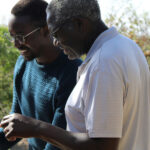Particularly if you’re in an Anglican church tradition, you might’ve been encouraged as a teenager to attend confirmation classes and then be “confirmed.” Perhaps you’ve wondered what this means; what exactly is being confirmed in confirmation? In this article, we will introduce the purpose, the practice, and the proper recipients of confirmation.
Preamble: The Sacraments
To understand confirmation, we need to talk about the sacraments. A sacrament is an outward and visible sign of an inward and spiritual grace. It is both a means by which we receive that grace and a pledge to assure us of it. Christ ordained only two sacraments: baptism and the Lord’s Supper. It is important to see the differences between baptism and communion and to discern what qualifies a person to participate in each.
To participate in communion, one must publicly profess personal saving faith in Christ.
Baptism is an entrance rite through which the church admits those Christ commands us to, namely those who make credible professions of faith and children born to believing parents. Communion differs in that as we receive the elements (the bread and wine), we personally testify to our faith in God’s covenant promises (1 Corinthians 11:17-33). For this reason, to participate in communion, one must publicly profess personal saving faith in Christ and have entered his church.
In churches where infants are baptised, then, there is a need for those who have been baptised as infants to take personal ownership of the vows made on their behalf at their baptism and publicly profess their faith when they are old enough. As the baptism of adults regularly follows their public profession of faith, there is no need for them to do confirmation. In line with the historic practice of the church, to provide this opportunity, Anglicans typically conduct confirmation services, usually led by a local bishop, for teenagers around 16 years of age.
Purpose and Proper Recipients
While the sacraments are an important context for confirmation, it is important to clarify that confirmation itself is neither a sacrament nor required by scripture, though it is agreeable to the scriptures. For this reason, any person who has credibly and publicly professed personal saving faith in Christ and who has been baptised should be welcomed to participate in the Lord’s Supper.
Confirmation itself isn’t a sacrament; nor is it required by scripture.
As the outward expression of inward faith, it is also crucial to state that confirmation does not guarantee salvation, as no outward rite or ceremony can produce genuine faith or of itself provide any benefit. It is only the work of the Holy Spirit, stirring us to genuine faith and continued obedience on the basis of Christ’s completed work, reconciling us to the Father—not confirmation or any other rite or ceremony—that saves.
The Practice (or Service)
The “confirmation” that confirmation gives is twofold:
- The confirmands (candidates for confirmation) themselves confirm and ratify the promises made at their baptism
- The bishop, on his part, confirms the veracity and authenticity of their testimony.
This means that confirmands need to understand what they are agreeing to. For this reason, since the first Book of Common Prayer (1549), it has been the practice of Reformed Anglican churches to catechise (to teach the essentials of the faith) all confirmands so that they understand the meaning of the vows they are confirming. This instruction often takes the form of Confirmation Classes. The exact content differs from church to church but often covers the Apostle’s Creed, Ten Commandments, the Lord’s Prayer, and the meaning of the sacraments.
Confirmation is the regular way for individuals to take ownership of the promises made on their behalf.
Once the confirmands have been taught, arrangements will be made for a local bishop to conduct the service. There are two reasons why bishops typically run the service. First, they are responsible for spiritual oversight, so it makes sense they should confirm the veracity and authenticity of the confirmands’ testimony. Second, their presence is an expression of the wider church’s witness to the confirmands taking ownership of the promises. That being said, in rare instances where a bishop is unable to conduct the service, some churches allow senior ministers to do so in his stead.
During the service, the confirmands are invited to the front of the church, facing the bishop. The bishop questions the candidates, who respond with the words written in the Prayer Book. Next, the minister calls the confirmands to kneel before the bishop, who will lay his hand on them and pray for them. Together, the Lord’s Prayer is said, and then the bishop leads the congregation in prayer for those who have been confirmed.
Putting It All Together
Essentially, confirmation services provide an opportunity for those baptised as infants to publicly affirm the vows made on their behalf at baptism and profess personal faith in Christ. Confirmation is the regular way that individuals can take ownership of these promises before participating in the Lord’s Supper.
Confirmation shouldn’t be viewed as an automatic guarantee of faith.
Ultimately—and perhaps most importantly—confirmation shouldn’t be viewed as an automatic guarantee of faith. It is rather a simple, public commitment to Christ from someone who has grown up within the church and wishes to take ownership of the promises made on their behalf at their baptism. The real value of confirmation isn’t in the service itself. It’s in the promises of God extended in grace and received by faith through the work of the Holy Spirit.














